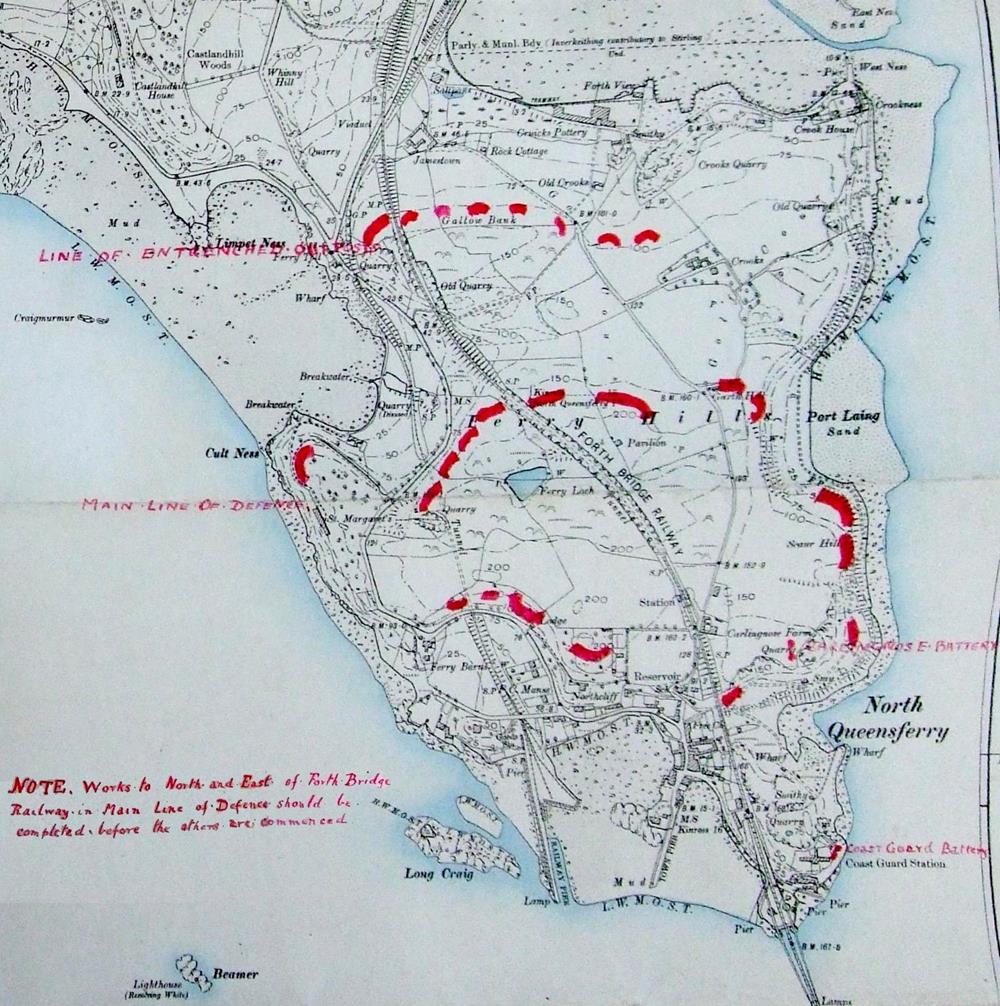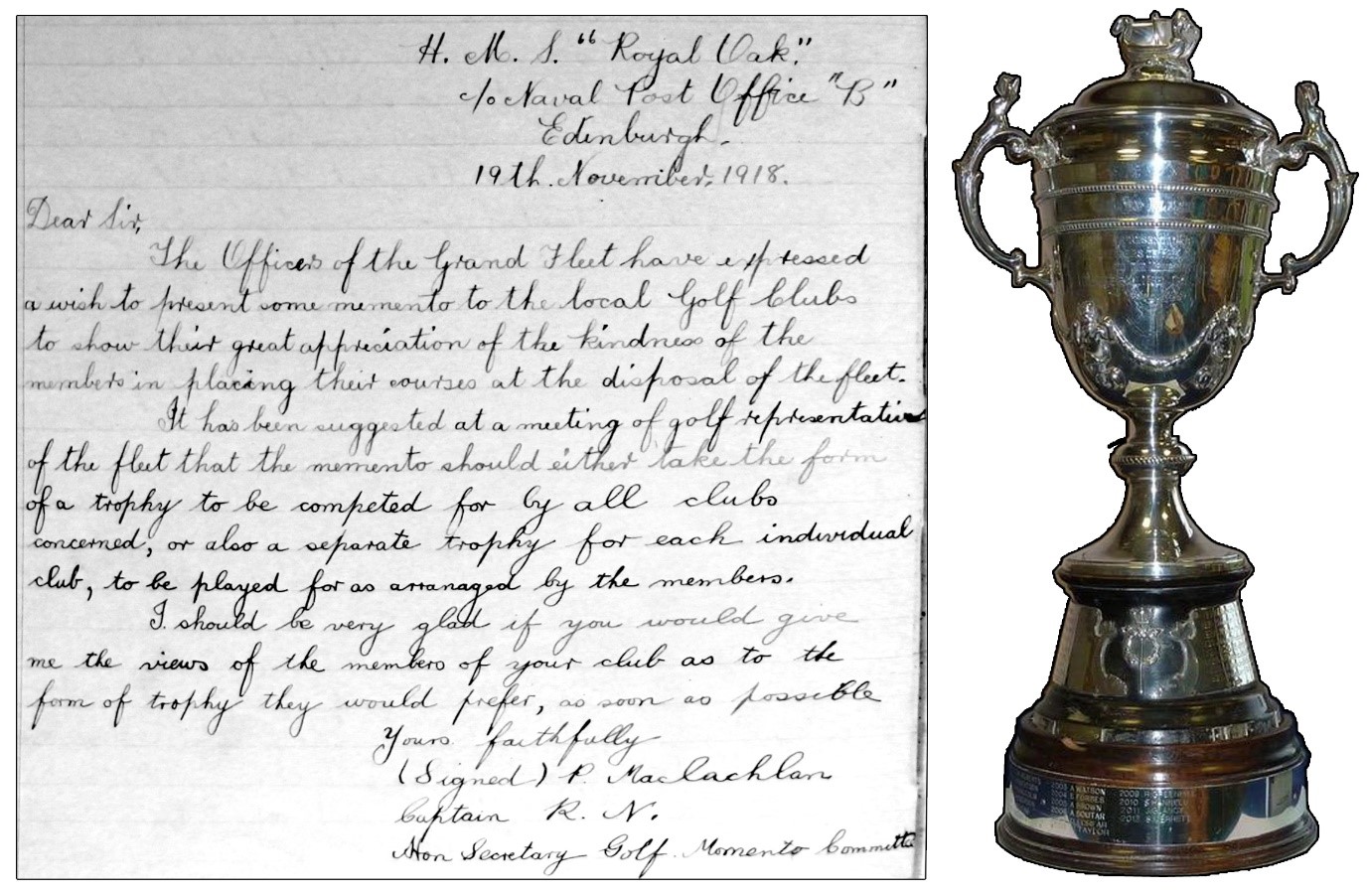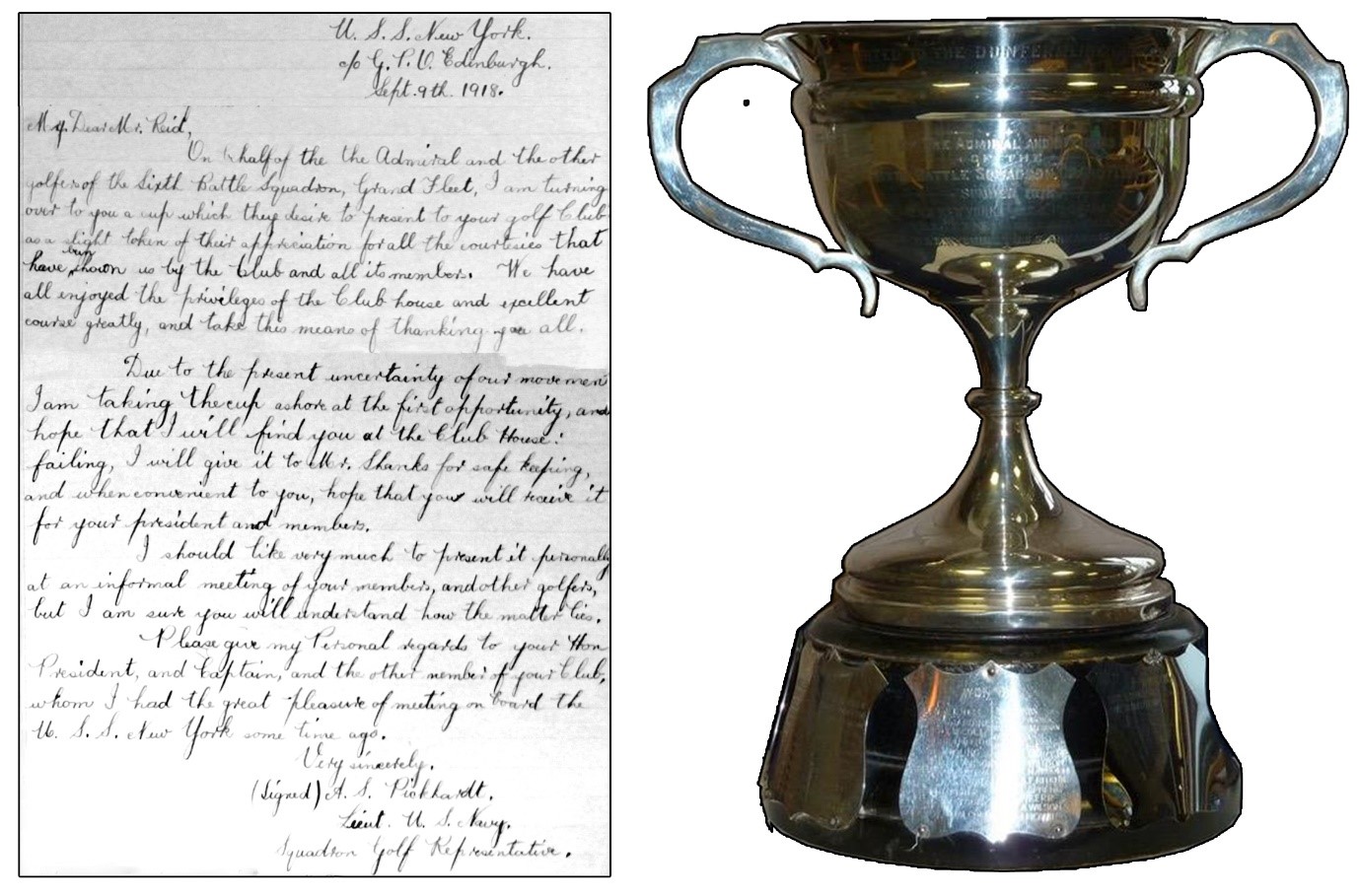Military Sites 3 – The Golf Course
The stretch of land from the shipbreaker’s yard to the reservoir on top of Ferry Hills was once the golf courses of Dunfermline Golf Club, then Ferryhills Golf Club. The club and course were affected positively and negatively by the naval presence in the Forth during WWI.
The full story of the course is told HERE
In 1890, Dunfermline Golf Club laid out a 9-hole golf course on a stretch of land at the southern end of Ferryhills. The course proved popular and it expanded several times leasing more land on Ferryhills and eventually by 1897, all of Cruicks estate, with Cruicks House as the Club House.
Meantime there was growing threat to national security. In 1903 the Admiralty purchased land at Rosyth for a new naval base and dockyard, and in 1909, the land of Cruicks Estate and Ferryhills was leased to the Tilbury Contracting and Dredging Company, with Dunfermline Golf Club as a sub-tenant. Tilbury had intended to quarry the land to help build Rosyth Dockyard, but could not reach agreement on terms with Easton and Gibb, the main dockyard contractors.
By the outbreak of WWI in 1914, there was a huge Royal Navy presence in the Forth. Ships’ officers were granted special privileges at Ferryhills course, so membership increased during the war years.
During the war, play continued, but was occasionally interrupted by military manoeuvres – the club house was occupied and trenches were dug on the course.

This chart shows where trenches were dug round the village to protect the Coastguard and Carlingnose Batteries.
(In 1921, the club received reparations for the damage.)
In 1918 at the end of the war, both the Royal Navy and United States Navy presented cups to the Club in thanks for their use of the course (Several US battleships joined the Grand Fleet in December 1917 to replace ships lost at the Battle of Jutland.)


1921 – the Admiralty purchases Cruicks Estate
Three years after the end of WWI, The Admiralty purchased Cruicks Estate and leased the land to the Tilbury Contracting and Dredging Company, with Dunfermline Golf Club as sub-tenants.
Activity at the quarry increased immediately, and the quarry workings encroached on the golf course, swallowing up several tees and holes. The Club leased new adjacent parcels of land, and reconfigured the course, but eventually decided to move to a brand new course at Torrie in 1928.
1928 – The Admiralty sells Cruicks estate to Tilbury
While Dunfermline Golf Club were negotiating the terms of the new course at Torrie, the Admiralty decided to sell Cruicks Estate to the Tilbury Contracting and Dredging Company. (They also sold part of Inverkeithing Bay to Thomas Ward, the ship breakers, who had leased this land since 1922.)
The golf course land was leased to the newly-formed Ferryhills Golf Club, who struck up a good relationship with Tilbury and ran the course until the demise of the club after the outbreak of WWII.
1938 – A German Spy?
Chapter 9 of “It taks a lang spin” by John Nicol McLaren, of Inverkeithing tells the tale of a possible German Spy on the Golf Course. In 1938, friends of Mr McLaren had rented small parcel of land to a “Mr Smith”who wanted to start a hen farm. John was introduced to Mr Smith as they shared an interest in ships and the Navy. There were lots of warships in the Forth and from the Ferryhills John was able to identify the aircraft carriers, battleships, town and county class cruisers along with destroyers and corvettes. Mr Smith visited John many times, and was shown the best vantage points to view the ships from the Ferryhills. He was a real enthusiast and knew the details of every ship in the Navy and had no difficulty in naming a particular ship. During the first half of 1939 he was always telephoning John to find the names of the ships lying in the river, and on one of his visits, he insisted on giving him photos of all the ships in the Navy, along with a pair of Zeiss binoculars, so he could identify the ships more easily.
John became worried about Smith’s growing interest in the warships, especially when he rang one day about additions to the main gun turrets on the Rodney and the Nelson. John contacted a friend who was a Police Sergeant. He took the photographs and binoculars and emphasised that I should say nothing nor do anything until I heard from him again.
My next meeting with the sergeant was a few days later when I was introduced to an officer from Naval Intelligence who questioned me at length about my friend Mr. Smith. He had already studied the photographs which he returned to me along with the binoculars. He told me to continue giving the hen farmer all the information he asked for.
A few days after the declaration of war I was asked to call at the police station and bring the photographs and binoculars. At the police station I again met the Intelligence Officer who refused to answer any of my questions. He reminded me instead that Great Britain was at war and that it was my sworn duty to remain silent about Mr. Smith and his great interest in the British Navy. He said that he was keeping the photographs and binoculars and I would be hearing from him at a later date.
Meanwhile my friends the farmers telephoned me to say that Mr. Smith and his wife had gone without telling anyone. They were mystified by their tenant’s sudden disappearance.
I had a question of my own that would never be answered: – ‘Was Mr Smith a German Spy?’
1939 – Barrage Balloons
On 15th October 1939 German planes attacked naval ships in the First Air Raid of WWII
On 25th October 1939, a mere nine days after the raid 948 Barrage Balloon Squadron arrived in North Queensferry.
Within 4 days balloon beds had been constructed, winches were in place and balloons were flying at each of the nine sites. Each site was manned by a crew of a corporal and eight or nine airmen.
The crew for Site 13 were housed in the Golf Club House.
1941 – The end of the Golf Course
The outbreak of WWII saw a dramatic drop in membership at the club, and by 1941, it was forced to close.
Back to Military Sites around North Queensferry – Index
top of page
